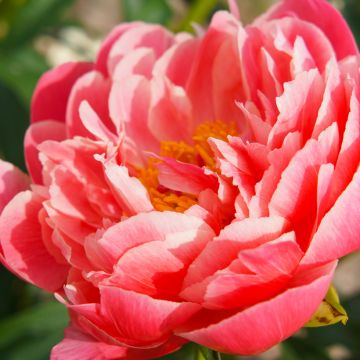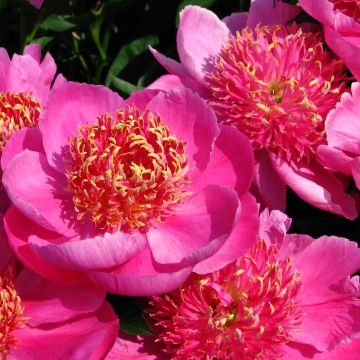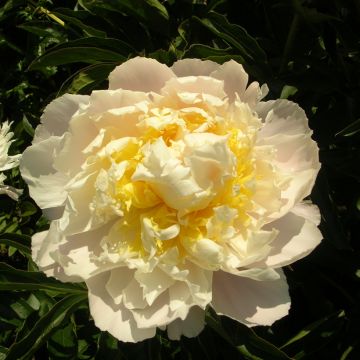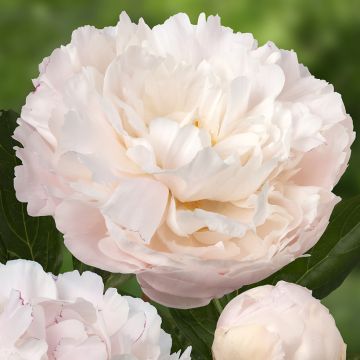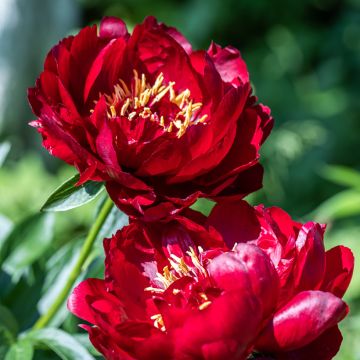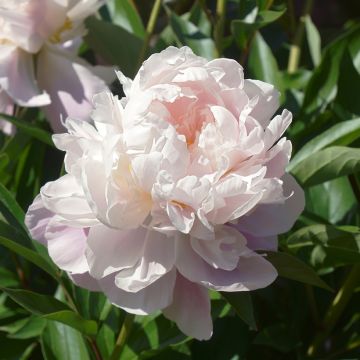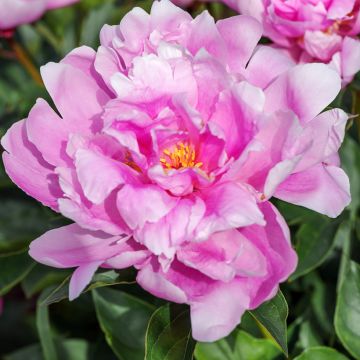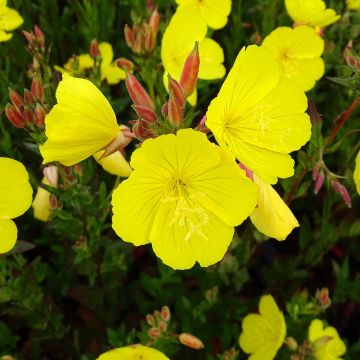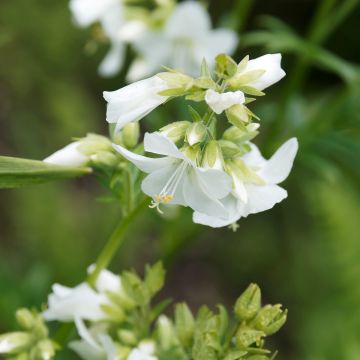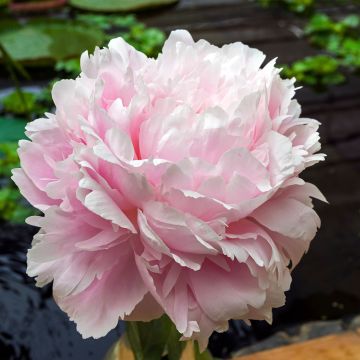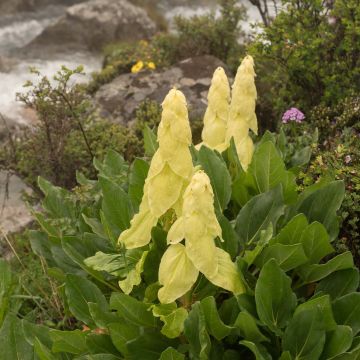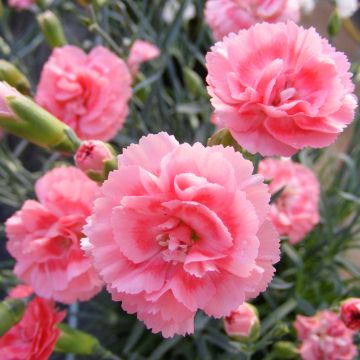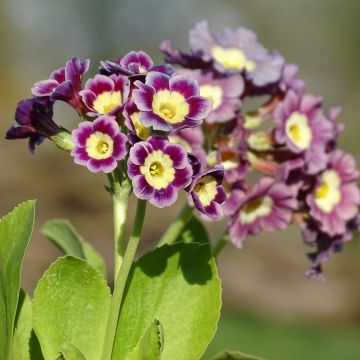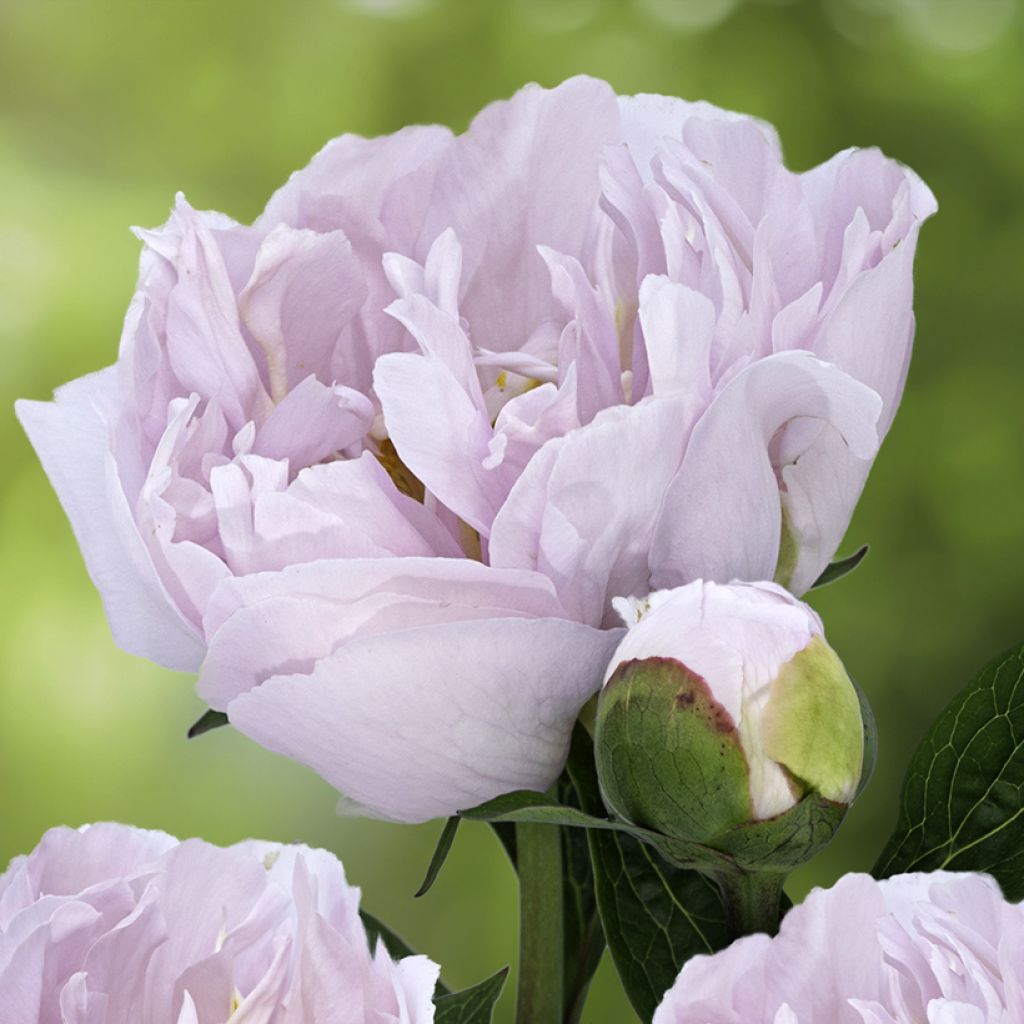

Paeonia x lactiflora Pink Vanguard - Chinese Peony
Paeonia x lactiflora Pink Vanguard - Chinese Peony
Paeonia x lactiflora Pink Vanguard
Chinese peony, Common peony, Garden peony, Herbaceous Peony
This item cannot be shipped to the selected country
Delivery charge from €5.90
Delivery charge from €5.90
More information
Schedule delivery date,
and select date in basket
This plant carries a 12 months recovery warranty
More information
We guarantee the quality of our plants for a full growing cycle, and will replace at our expense any plant that fails to recover under normal climatic and planting conditions.
From €5.90 for pickup delivery and €6.90 for home delivery
Express home delivery from €8.90.
From €5.90 for pickup delivery and €6.90 for home delivery
Express home delivery from €8.90.
Does this plant fit my garden?
Set up your Plantfit profile →
Description
The 'Pink Vangard' Peony is a vigorous and reliable variety that produces semi-double to double flowers with a thick substance, a pale pink that fades, adorned with a beautiful cluster of yellow stamens. This excellent selection blooms early in the season and longer than other varieties. It develops abundant foliage of a deep bluish-green colour, very healthy, which remains decorative until autumn. It is an excellent plant for borders and its flowers are superb in bouquets.
Herbaceous and hybrid peonies mainly come from Paeonia lactiflora, a perennial plant native to central and eastern Asia (from eastern Tibet, northern China, to eastern Siberia), where it naturally grows in woods and meadows. This plant now belongs to the peony family. Its deciduous foliage emerges in spring and disappears in autumn. It grows from a large, fleshy root that does not like to be moved.
The Paeonia lactiflora 'Pink Vangard' is a cultivar selected in the United States (Wisconsin) in 2005 by Seidl and registered by Hollingsworth. The plant, with fairly slow growth, forms over the years a beautiful bushy clump reaching 80 to 90 cm in all directions. Its large flowers, 13-15 cm in diameter, appear from the first half of May, depending on the climate. The strong stems have lateral buds, which prolongs the flowering period. The large round flower buds open into semi-double, sometimes double, corollas, depending on the position of the flower on the stem: the terminal flowers are generally double, while those that open from lateral buds are semi-double. The colour of the petals is a milky pink, slightly deeper at the base, quickly becoming shell pink. It often happens that the small petals in the centre of the corolla are slightly washed with red. The scent of this variety is very subtle. The foliage unfolds into large leaves divided into segments of a dark bluish-green colour. The leafy stems disappear in winter, while the buds persist at ground level and will develop in spring. This very perennial plant grows from a large, fleshy root that does not like to be moved.
The 'Pink Vangard' Peony is an extraordinary variety, suitable for all uses. It can be planted in borders or along pathways, mixed with simple perennials such as columbines, bellflowers, delphiniums, or hardy geraniums. It can also be added to the flower reserve for bouquets in the vegetable garden. Pot cultivation is not recommended as its needs will not be met. Over time, the peony becomes majestic and blooms more abundantly, producing up to 60 flowers. A bouquet composed of peonies, bellflowers, lilacs, and old roses like 'Centifolia Muscosa' will perfume the house.
Report an error about the product description
Flowering
Foliage
Plant habit
Botanical data
Paeonia
x lactiflora
Pink Vanguard
Paeonicaeae
Chinese peony, Common peony, Garden peony, Herbaceous Peony
Cultivar or hybrid
Other Herbaceous and hybrid Peonies
Planting and care
The best time to plant 'Pink Vanguard' peonies is in autumn. Plant the peonies in the sun or in a light position, 60 cm apart. They like cold winters, which encourage dormancy and flower formation. The soil must be loose, deep, fertile and cool. They need their own space and are sensitive to competition from other species. Prepare a hole 50 cm deep and mix an organic fertiliser into the soil, partially fill it in, place your plants and cover with 6 cm of soil above the eyes. After planting, tamp and water copiously. After planting, tamp down and water copiously. Our bouquet secret: Cut your peonies at daybreak, when the buds begin to colour. Don't delay putting them in water.
Planting period
Intended location
Care
This item has not been reviewed yet - be the first to leave a review about it.
Spring flowering perennials
Haven't found what you were looking for?
Hardiness is the lowest winter temperature a plant can endure without suffering serious damage or even dying. However, hardiness is affected by location (a sheltered area, such as a patio), protection (winter cover) and soil type (hardiness is improved by well-drained soil).

Photo Sharing Terms & Conditions
In order to encourage gardeners to interact and share their experiences, Promesse de fleurs offers various media enabling content to be uploaded onto its Site - in particular via the ‘Photo sharing’ module.
The User agrees to refrain from:
- Posting any content that is illegal, prejudicial, insulting, racist, inciteful to hatred, revisionist, contrary to public decency, that infringes on privacy or on the privacy rights of third parties, in particular the publicity rights of persons and goods, intellectual property rights, or the right to privacy.
- Submitting content on behalf of a third party;
- Impersonate the identity of a third party and/or publish any personal information about a third party;
In general, the User undertakes to refrain from any unethical behaviour.
All Content (in particular text, comments, files, images, photos, videos, creative works, etc.), which may be subject to property or intellectual property rights, image or other private rights, shall remain the property of the User, subject to the limited rights granted by the terms of the licence granted by Promesse de fleurs as stated below. Users are at liberty to publish or not to publish such Content on the Site, notably via the ‘Photo Sharing’ facility, and accept that this Content shall be made public and freely accessible, notably on the Internet.
Users further acknowledge, undertake to have ,and guarantee that they hold all necessary rights and permissions to publish such material on the Site, in particular with regard to the legislation in force pertaining to any privacy, property, intellectual property, image, or contractual rights, or rights of any other nature. By publishing such Content on the Site, Users acknowledge accepting full liability as publishers of the Content within the meaning of the law, and grant Promesse de fleurs, free of charge, an inclusive, worldwide licence for the said Content for the entire duration of its publication, including all reproduction, representation, up/downloading, displaying, performing, transmission, and storage rights.
Users also grant permission for their name to be linked to the Content and accept that this link may not always be made available.
By engaging in posting material, Users consent to their Content becoming automatically accessible on the Internet, in particular on other sites and/or blogs and/or web pages of the Promesse de fleurs site, including in particular social pages and the Promesse de fleurs catalogue.
Users may secure the removal of entrusted content free of charge by issuing a simple request via our contact form.
The flowering period indicated on our website applies to countries and regions located in USDA zone 8 (France, the United Kingdom, Ireland, the Netherlands, etc.)
It will vary according to where you live:
- In zones 9 to 10 (Italy, Spain, Greece, etc.), flowering will occur about 2 to 4 weeks earlier.
- In zones 6 to 7 (Germany, Poland, Slovenia, and lower mountainous regions), flowering will be delayed by 2 to 3 weeks.
- In zone 5 (Central Europe, Scandinavia), blooming will be delayed by 3 to 5 weeks.
In temperate climates, pruning of spring-flowering shrubs (forsythia, spireas, etc.) should be done just after flowering.
Pruning of summer-flowering shrubs (Indian Lilac, Perovskia, etc.) can be done in winter or spring.
In cold regions as well as with frost-sensitive plants, avoid pruning too early when severe frosts may still occur.
The planting period indicated on our website applies to countries and regions located in USDA zone 8 (France, United Kingdom, Ireland, Netherlands).
It will vary according to where you live:
- In Mediterranean zones (Marseille, Madrid, Milan, etc.), autumn and winter are the best planting periods.
- In continental zones (Strasbourg, Munich, Vienna, etc.), delay planting by 2 to 3 weeks in spring and bring it forward by 2 to 4 weeks in autumn.
- In mountainous regions (the Alps, Pyrenees, Carpathians, etc.), it is best to plant in late spring (May-June) or late summer (August-September).
The harvesting period indicated on our website applies to countries and regions in USDA zone 8 (France, England, Ireland, the Netherlands).
In colder areas (Scandinavia, Poland, Austria...) fruit and vegetable harvests are likely to be delayed by 3-4 weeks.
In warmer areas (Italy, Spain, Greece, etc.), harvesting will probably take place earlier, depending on weather conditions.
The sowing periods indicated on our website apply to countries and regions within USDA Zone 8 (France, UK, Ireland, Netherlands).
In colder areas (Scandinavia, Poland, Austria...), delay any outdoor sowing by 3-4 weeks, or sow under glass.
In warmer climes (Italy, Spain, Greece, etc.), bring outdoor sowing forward by a few weeks.

































